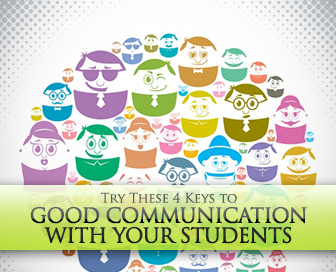Keep Their Eye on the Prize: 5 Visual Aids You Should Be Using in Your ESL Classroom


Well, no. In fact, I wouldn’t claim fluency in any language other than English though I do know smatterings of a few. And because of that, teaching solely in English to students who are just learning the language makes communication, well, complicated for a lot of ESL teachers. Good communication with non-English speaking students is not impossible, though. In fact, if you have the right tools, you can have excellent communication with a group of students who are just learning English. Here are some tools that I have used to foster good communication with my students in the classroom.

One of the most natural tools for teaching English concepts to any class is explanations. Teachers teach, and when they do they explain grammatical concepts, vocabulary words or appropriate discourse strategies. Most of the time there is a spoken element in the explanation. The teacher speaks about the language concept to the students. Explanations can encompass more than just the spoken word, however. Written explanations also fall into this category. Whether is it a chapter in a text book or a hand out that your students can follow, ESL teachers use these methods to explain language to their students, and both types of explanations are the fist key to good communication with your students.
They say a picture is worth a thousand words, and no place is that more true than in the ESL classroom. When you use visual aids to communicate with your students, you pass the language barrier and get right to the heart of meaning. The term visual aids encompasses a lot of things you can use in your classroom. Pictures, charts, tables and objects are all types of visual aids. When teaching concrete vocabulary, visual aids like picture dictionaries are essential, but don’t stop there. You can use visual aids to teach grammatical concepts as well. I can’t tell you how often I have used Azar’s diagrams of the twelve tenses in English. And by giving my students those visuals, they have a concrete picture of an abstract concept. Not only does this improve our communication, it makes them more successful learners and more motivated students. Because we often struggle with a language barrier, using visual aids makes communication less dependent on words that they might not understand.
Once you have given an explanation and used a visual to help your students understand the day’s lesson, the next step is giving them examples in English. Theory is all fine and good, but your students need the practical and real examples that sample sentences afford. This shows them not only why a particular concept follows a certain pattern but how to use that concept in practical and real settings. Offer your students written examples as well as oral ones. Even the lowest level students will benefit from having examples written on the board (even if they can’t yet read or understand them). As you provide examples, give your students more than one, and don’t forget to include examples of the exceptions to the rules, too, when they are ready to handle them.
Now before you get too carried away with giving your students examples, remember that they are there to learn to use English correctly. So the last tool for communication with your students gives them a chance to contribute to the lesson. Once you have explained the concept of the day, given a visual and supplied some examples, challenge your students to give some examples of their own and then write them on the board. Having your students contribute examples serves several functions.
First, it makes your classroom more student centered. No ESL teacher should be the one and only speaker in their classroom. Getting your students to speak is essential, and asking them for examples of what you have just taught will let them know you want them to actively participate in class.
Second, by eliciting examples from your students you will be able to tell how well they have grasped the concept you are trying to teach. If your students are unable to supply appropriate examples, you may need to go back to step one and reexplain the language concept you are trying to teach. Or you may need to go back to step three and provide some additional examples. Eliciting examples from your students gives you a read on how well they understand and where you may need to clarify.
Finally, student examples also challenge your students to be creative with their language knowledge. Ideally, your student examples won’t be near cookie cutter duplicates of your own. Challenge your students to use the language they know to be creative and bold in what they say in class, using the new grammar or vocabulary you have taught. Affirm correct examples. Make minor corrections for examples that may need it. Above all, encourage your students to be vocal and make a habit of communicating.
Without it, your students become frustrated and you become ineffective. They next time you are teaching something new to your ESL students, try using these four tools for ensuring good communication, and you will find that everyone in the classroom feels better about what they have learned!